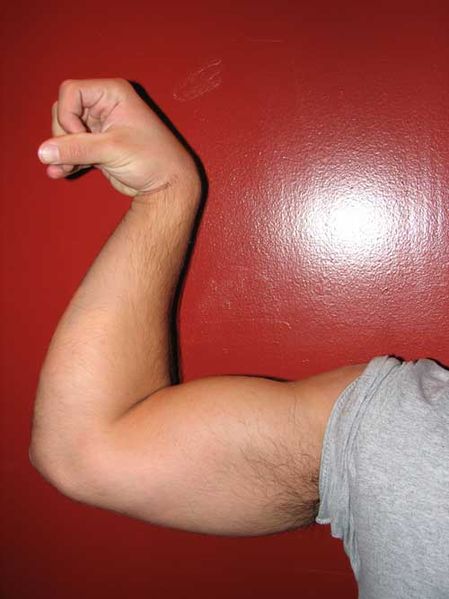Pronation
 From Wikidoc - Reading time: 3 min
From Wikidoc - Reading time: 3 min
Please Take Over This Page and Apply to be Editor-In-Chief for this topic: There can be one or more than one Editor-In-Chief. You may also apply to be an Associate Editor-In-Chief of one of the subtopics below. Please mail us [1] to indicate your interest in serving either as an Editor-In-Chief of the entire topic or as an Associate Editor-In-Chief for a subtopic. Please be sure to attach your CV and or biographical sketch.
Overview[edit | edit source]
Pronation is an anatomical term to describe a rotation movement[1]. Such movement can occur in the forearm (at the radioulnar joint) and the foot (at the subtalar and talocalcaneonavicular joints)[1][2].
For the forearm, when standing in the anatomical position pronation will move the palm of the hand from an anterior-facing position to a posterior-facing position without an associated movement at the shoulder (gleno-humeral joint). For the foot pronation will cause the sole of the foot to face more laterally than when standing in the anatomical position.
Pronation is the opposite of supination.
Pronation of the Forearm[edit | edit source]

It is performed by the Pronator quadratus and Pronator teres muscle.
Pronation of the forearm should not be confused with medial rotation of the shoulder. When standing in the anatomical position, medial rotation of the shoulder can perform part of the movement to change the palm from facing anteriorly to posteriorly. Pronation of the forearm occurrs at the radioulnar joint so such a movement does not constitute it. To isolate medial rotation in the shoulder from pronation of the forearm one can stand with ones elbows tucked against the trunk, with the elbows flexed to 90 degrees with the forearms pointing directly in front of the body with the palms of the hands facing upwards. Keeping ones elbows tucked at the sides, the act of moving ones forearms so that the palms are facing downwards is pronation of the forearm.
Pronation of the Foot[edit | edit source]
The pronated foot is one in which the heel bone angles inward and the arch tends to collapse. A "knock-kneed" person has overly pronated feet. This flattens the arch as the foot strikes the ground in order to absorb shock when the heel hits the ground, and to assist in balance during mid-stance. If habits develop, this action can lead to foot pain as well as knee pain, shin splints, achilles tendonitits and plantar fasciitis.[3].
References[edit | edit source]
- ↑ 1.0 1.1 Kendall FP, McCreary EK and Provance PG. (1993).Muscles Testing and Function. 4th Edition. Lippincott Williams and Wilkins. Philidelphia. ISBN 0-683-04576-8.
- ↑ Brukner P and Khan K. (1993). Clinical Sports Medicine. 1st Edition. McGraw-Hill Book Company. Sydney. ISBN 0-07-452852-1.
- ↑ "Common Foot Problems".
See also[edit | edit source]
- capitulum of the humerus
- radial notch
- proximal radioulnar articulation
- distal radioulnar articulation
- annular ligament
External links[edit | edit source]
- Template:DartmouthAnatomy
- Template:EMedicineDictionary
- Pronation at the US National Library of Medicine Medical Subject Headings (MeSH)
 KSF
KSF